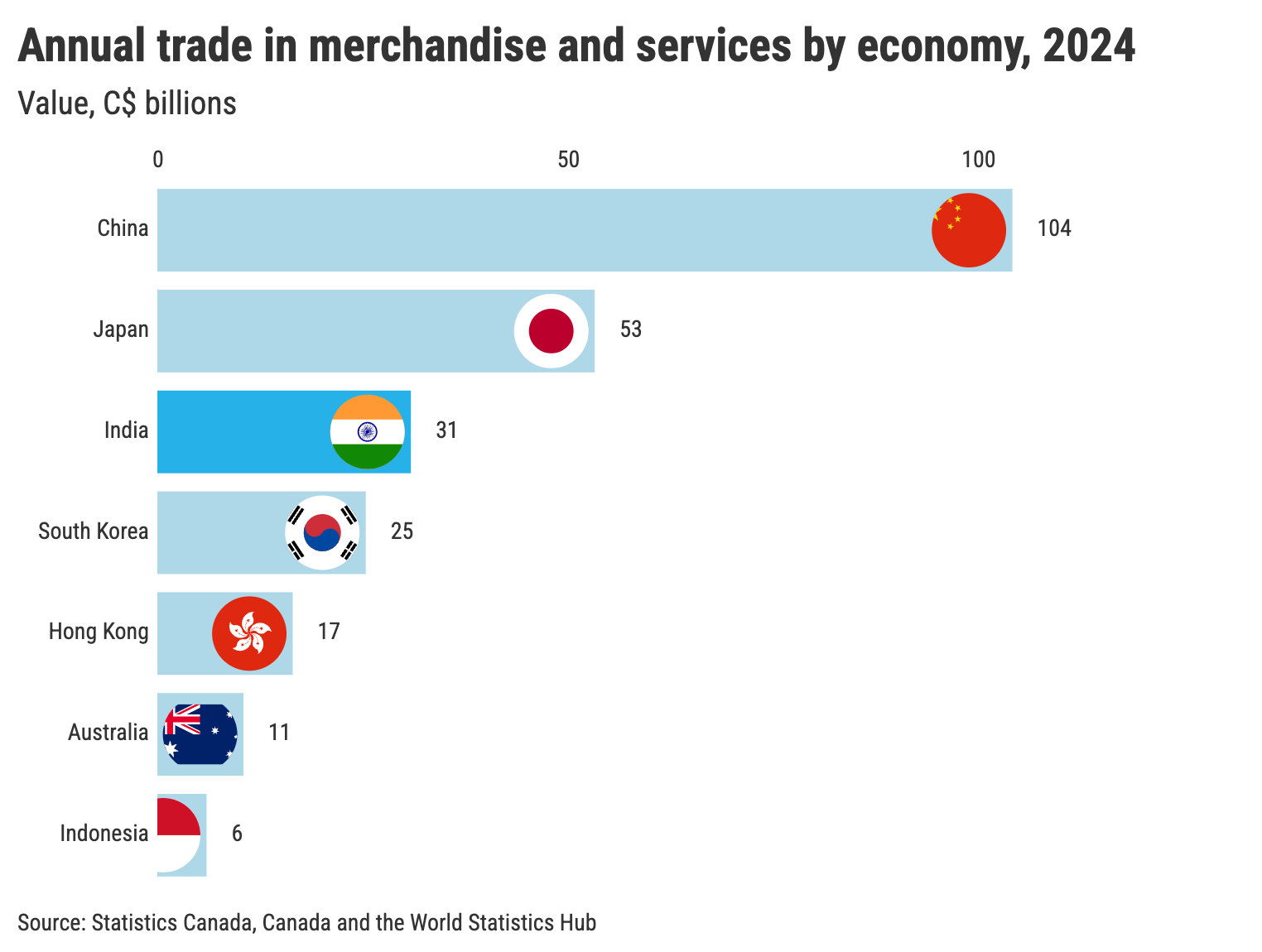Canadian Foreign Affairs Minister Anita Anand’s trip to India from October 12–14 nudged the bilateral relationship from a cautious ‘reset’ to a comprehensive ‘renewal,’ marking an end to two years of strained ties.
On Monday, Anand and her Indian counterpart, S. Jaishankar, released an ambitious ‘roadmap’ for re-engagement, spanning trade, critical minerals, artificial intelligence, energy, education, and business.
The 1,200-word statement affirms a “mutual respect for shared democratic values, the rule of law, and a commitment to upholding the principles of sovereignty and territorial integrity.” The roadmap also acknowledges the value of “reviving” the partnership in light of “ongoing global economic uncertainty and rising geopolitical tensions,” presumably a nod to the U.S.’s volatile trade policy.
The U.S. was the largest trading partner for both Canada and India in 2024–25.
Anand also met with Indian Prime Minister Narendra Modi and India’s commerce minister.
Great expectations?
Anand’s visit and the roadmap were unthinkable even six months ago, but a new government in Ottawa and a mutual desire to diversify trade ties have created the conditions for a renewal. And although the relationship is now hurtling along, there may be speed bumps; most notably, the ongoing murder trial of four Indian nationals allegedly linked to the 2023 killing of Canadian Hardeep Singh Nijjar.
Moreover, in Canada, a fragmenting consensus on immigration threatens to impact the scores of Indian students and temporary workers who come to the country each year.
But there’s reason for optimism. A new APF Canada poll, conducted with the Angus Reid Institute, suggests that 51 per cent of Canadians support Ottawa's diplomatic reset with New Delhi, compared to just 22 per cent who oppose such a rapprochement.

Fifty-four per cent of respondents, however, registered unfavourable views towards India — the third-highest percentage, trailing only China (59%) and the U.S. (63%) — but 68 per cent also reported limited knowledge of India, suggesting room to build more awareness and familiarity.
A tale of two visits
After her India visit, Anand travelled to Singapore and then China, where she wrapped up a quick trip today. In China, Anand met with her counterpart, Wang Yi.
Speaking to the Globe and Mail, Anand said her goal was to “stabilize the relationship... in a way that puts the interests of our workers, businesses, [and] industries first.”
China’s ambassador to Canada said recently that Beijing would drop its tariffs on “the relevant products of Canada” (i.e. canola, pork, and seafood) if Ottawa eliminated its 100 per cent tariff on electric vehicles.
Canadian premiers disagree on Ottawa’s next move; Manitoba’s Wab Kinew and Saskatchewan’s Scott Moe have encouraged Canadian Prime Minister Mark Carney to scrap the EV tariffs, while Ontario’s Doug Ford argues that the levies are “critical to protecting” jobs in his province.
If Carney does meet with Chinese President Xi Jinping at the upcoming APEC leaders’ summit, tariffs and trade will likely dominate the discussion.
